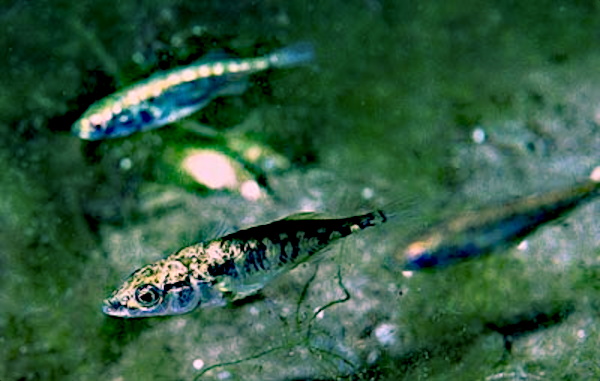The threespine stickleback, Gasterosteus aculeatus, is a small fish that inhabits marine, estuarine and freshwater habitats in the holarctic. It has been previously inferred that in many regions, freshwater populations derived from oceanic ancestors. As soon as the freshwater populations are in different drainage systems, they can be considered as independent of each other. Those natural replicates are one of the reasons why sticklebacks are a model system to study adaptive evolution.

Sticklebacks adapt to freshwater habitats in a recurrent manner by modifying several key phenotypic traits. Many studies focused on identifying those traits and measuring their heritability or fitness properties. At the phenotypic level, there is a striking parallelism between derived freshwater population, but what is unclear is how much this parallelism is underlined by genome-wide patterns of parallel evolution.
That is the main question that Hohenlohe et al. tackled in their 2010 paper entitled "Population genomics of parallel adaptation in threespine stickleback using RAD Tags". They compared the genomes of fish originating from three lakes and two coastal saltwater habitats located along Alaska's southern coast. The three lakes were chosen in different drainage systems to have three independent instances of adaptation to freshwater (and maybe to have an excuse to hike from one sampling point to the other?).
The approach they developed (RAD tags) allows to detect single-nucleotide polymorphism (SNP) across the whole genome. The data processing analysis is nicely illustrated here. Such method produces an enormous amount of results. There is so much data, that any dubious point can be discarded prior to the final analysis to keep only the SNP that have the highest probability of actually representing existing polymorphism in the populations.
The results first confirm the classical hypothesis of a large oceanic population giving rise to divergent freshwater population. They also found many genomic regions showing signatures of balancing and divergent selection across all three freshwater populations. This suggests that phenotypic evolution occurs through parallel genetic evolution at the genome scale. Interestingly, they could, using the stickleback annotated genome, identify candidates genes that are linked with phenotypic changes.
While some parts of the methods lack transparency, the results they get are highly convincing. The fact that they were able to show parallelism at the genome level and then identify candidate loci that are important in the adaptive process is really interesting. This because it may motivate many in-depth studies on specific genes or pathways that have been shown to be related to adaptation. Regarding the paper, it took some time and attention to understand clearly the figures (mostly 6, 7 and 8). They hold tons of results and are not so straightforward to grasp quickly. In conclusion, the correlative patterns outlined by this research are striking, but call for experiments designed to test specific hypothesis on particular genomic regions.
No comments:
Post a Comment